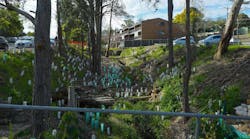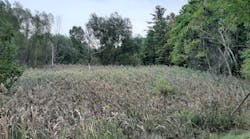Prepare for Certification Exams With Help From the Experts
One requirement to be certified by any of the four EnviroCert International Inc. programs is that of passing a comprehensive written exam. It covers principles, methods, and regulations pertaining to the particular field of practice.
In the case of the Certified Professional in Erosion and Sediment Control (CPESC) certification, for example, the five-hour exam includes two parts: 190 true-false, multiple-choice, matching, and comparison questions and a 36-question multiple-choice section that covers practical application of this knowledge. The testing process is similar for each of the other EnviroCert International Inc. certifications: Certified Professional in Erosion and Sediment Control (CPESC), Certified Professional in Storm Water Quality (CPSWQ), Certified Erosion, Sediment and Storm Water Inspector (CESSWI), and Certified Municipal Separate Storm Sewer System Specialist (CMS4S).
Instructors’ Roles
To help applicants prepare for these exams, EnviroCert International Inc., offers a series of daylong exam review courses throughout the year at various locations in the United States and Canada. They are taught by a cadre of instructors, selected and approved by EnviroCert International Inc., based on their knowledge and field experience and their performance in co-teaching two exam review courses.
“These courses highlight the basic knowledge that a registrant needs to work effectively in the industry,” says instructor Michael Chase, CPESC, CPSWQ, CESSWI. “The instructor’s role is to help registrants understand important concepts and what they need to know to pass the exam.”
Instructor Dan Ross, CPESC, CESSWI, strives to make the course material relevant to situations that applicants face in their daily work. “In presenting the standardized content of the course, I also bring in examples from my actual experiences in the field,” he says. “Also, I encourage group discussion during the class so that they are learning from each other about ideas and techniques that we may not have been aware of.”
“Ultimately, we’re trying to make a difference by improving water quality,” adds instructor Mark McCabe, CPESC, CESSWI.
All three teach the Exam Review Courses for the CPESC and CESSWI certifications, and each demonstrates the kind of technical and teaching expertise that EnviroCert International Inc. requires of its instructors.
Field-Tested Expertise
In helping students prepare for the exam, Chase, for instance, draws on his 25 years of experience, which ranges from installing and maintaining on-farm erosion and sediment control practices to designing stormwater management systems for industrial sites.
Currently, as the owner of a consulting business, MC Environmental Solutions in Bakersfield, CA, he designs Storm Water Pollution Prevention Plans (SWPPP), inspects erosion and sediment control practices at construction sites, and serves as a trainer of record for the State of California’s Construction General Permit requirements for Qualified SWPPP Developers (QSD) and Qualified SWPPP Practitioners (QSP).
Ross, who lives in Stow, OH, recently retired from a 34-year career in erosion and sediment control, mostly with the USDA’s Natural Resource and Conservation Service (NRCS). For his last three years he served all of Ohio as the first NRCS State Urban Conservationist. During that time, he worked with Soil and Water Conservation District personnel, contractors, and the staff of municipal public works departments implementing erosion control projects, inspecting construction site BMPs, and preparing SWPPPs.
Ross became an instructor in 1996. Since 2006, he has taught the Exam Review Course to 603 CPESC applicants and 359 CESSWI applicants. That’s one reason Ohio now leads all other states in the number CESSWI registrants-232-and ranks third in CPESC registrants-269. The state is fourth among all the others with 40 CPSWQ registrants. “The real credit for this number of certificate holders goes to the various state agencies and organizations, like the Ohio Department of Transportation, Soil and Water Conservation Districts, and contractors’ associations, which sponsor the review courses and exams,” Ross says.
The Big Picture
Mark McCabe, an instructor since 2005, is a project manager with CDM Inc. He’s based in the Columbus, OH, office of this international engineering and architectural firm. For the past 15 years, the bulk of McCabe’s work has involved developing transportation-related policies for stormwater management and regulatory compliance.
At the individual project level, he develops erosion and sediment control practices and policies on construction sites and develops and designs post-construction stormwater management plans, water-quality controls, and regulations.
“I want to help contractors understand how the material presented in the course ties in with their state and, more importantly, local requirements, so that they can see how it all fits into the big picture, federal regulations administered on at the local level,” McCabe says. “I like to keep the class as informal as possible and engage them in discussing their real-world project experiences.”
Typically, the certification exam is given two days after the exam review course. Chase, who has been teaching these courses for the past six years, reserves the day in between as a bonus day to discuss any questions that applicants may still have about material presented in the exam review.
One frequent topic is the Revised Universal Soil Loss Equation (RUSLE), he notes. “Even though it’s part of the exam, many of them have never worked with the equation, because their state or local authorities don’t require it,” Chase says. “So, we’ll go into detail about the purpose of RUSLE, how it works and how it can be used in SWPPP development aiding in the selection of BMPs.” More information about the exam review courses is available at www.envirocertintl.org.


